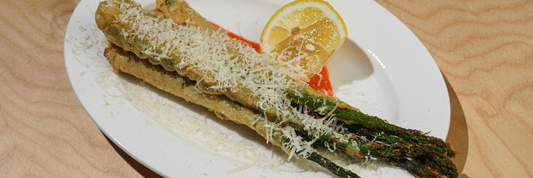Cutting boards are an essential tool in any kitchen. Choosing the right cutting board not only protects your knives and ensures food hygiene, but also optimizes your cooking experience. This article will help you learn how to choose a cutting board based on the material, intended use, and personal needs.
- Kitchen Cutting Board : Definition, Uses, and Benefits
- How to Make a Cutting Board: Step-by-Step DIY Guide
- How to Clean Cutting Boards with Vinegar, Bleach and Baking Soda
Things to Consider When Choosing a Cutting Board
To choose the right cutting board for your needs, you need to consider many important factors such as material, intended use, size, additional features, and maintenance. Here is a detailed analysis of each factor:
Purpose of Use
Choosing the right cutting board according to the purpose of use helps optimize efficiency and ensure food hygiene and safety:
- Cutting vegetables and fruits: Choose a light, moderately sized and easy-to-clean cutting board.
- Processing raw meat: Use a plastic cutting board with a waterproof surface to avoid cross-contamination of bacteria.
- Serving food: Prioritize choosing a wooden or bamboo cutting board with a beautiful design, suitable as a decorative tray for dishes such as cheese and bread.

Size and Thickness
Size:
- Large cutting boards are suitable for preparing large amounts of food, such as slicing meat or cutting many vegetables at once.
- Small or medium cutting boards are suitable for simple dishes or when kitchen space is limited.
Thickness:
- Thick cutting boards are usually stable and less prone to warping, especially suitable for chopping.
- Thin cutting boards are easy to move, convenient for quick cutting.

Additional Features
- Drainage groove: The groove around the cutting board helps collect water from food, avoiding spillage onto the kitchen surface.
- Anti-slip surface: Increases grip, reduces the risk of the cutting board slipping when cutting, ensuring more safety.
Easy to maintain
- Choose a cutting board that is easy to clean and does not get dirty easily.
- For those who use a dishwasher, choose a cutting board that can be washed in the dishwasher (usually plastic or glass).
- Avoid soaking in water for long periods of time, especially with wooden and bamboo cutting boards.
Material
The material of the cutting board plays an important role in ensuring durability, hygiene, and safety for knives and food.
Types of Specialized Cutting Boards
In addition to the common cutting boards, there are many types of specialized cutting boards on the market today that are suitable for each purpose or special needs. Here are some notable types:
Double-sided cutting board
This type of cutting board is designed with two separate sides to ensure food hygiene and avoid cross-contamination:
Uses:
- One side is used to cut raw meat.
- The other side is used for cooked food or clean ingredients such as vegetables and fruits.
Advantages:
- Reduces the risk of bacterial contamination between raw and cooked food.
- Easily distinguish the two sides thanks to the color or characteristic symbols.
Flexible soft cutting board
This is a type of cutting board made of flexible plastic, highly elastic and easy to use in many situations:
Uses:
- Easily rolled up after cutting, making it more convenient to pour cut food into a pot or pan.
- Suitable for preparing vegetables, fruits or snacks.
Advantages:
- Lightweight, thin, space-saving storage.
- Easy to clean and dishwasher safe.
- Usually cheaper than traditional hard cutting boards.
Disadvantages: Not suitable for chopping or using strong force.
Environmentally friendly cutting boards
For those who care about protecting the environment, this type of cutting board is made from natural and sustainable materials:
Popular materials:
- Bamboo: Quickly regenerated, environmentally friendly, does not wear out knives much.
- Recycled wood: Produced from leftover or used wood, limiting waste of resources.

Advantages:
- Does not emit microplastics, safe for health and the environment.
- Beautiful, natural design, suitable for decorating dining tables or serving food.
Disadvantages: Need careful care to avoid mold and damage.
Should You Buy a Cutting Board with Extra Features?
Cutting boards with additional features are widely available, but they often come with trade-offs. For example, rubber feet enhance board stability and improve airflow but prevent you from flipping the board to use both sides. (If your board slides, placing a dish towel underneath is an effective alternative for stabilization.)
Boards with liquid-catching grooves are invaluable for carving roasted meats or handling juicy produce like tomatoes. However, they may not be essential if your primary tasks are chopping onions or basic food prep. Similarly, cutting boards that fold in half or feature gimmicks for transporting food are prone to breaking, ripping, or falling apart. A simple bench scraper is a more durable and practical tool for moving prepped ingredients.

As for boards with integrated cups or trays, these extras may seem convenient but are rarely necessary. The containers you already own work perfectly well for organizing your mise en place.
FAQs About Selecting a Cutting Board
Can I use the same cutting board for all foods?
No. Use separate cutting boards for raw meat and vegetables to avoid cross-contamination.
How often should I replace my cutting board?
When the cutting board has deep cracks or scratches.
Are thicker cutting boards more durable?
Yes, thicker cutting boards are more resistant to force and warp less.
Conclusion
Choosing a cutting board depends not only on the material but also on the intended use and maintenance habits. Whether it is wood, plastic, bamboo or glass, each type of cutting board has its own advantages and disadvantages. Choose the one that suits your needs to optimize cooking efficiency and protect your family's health.




